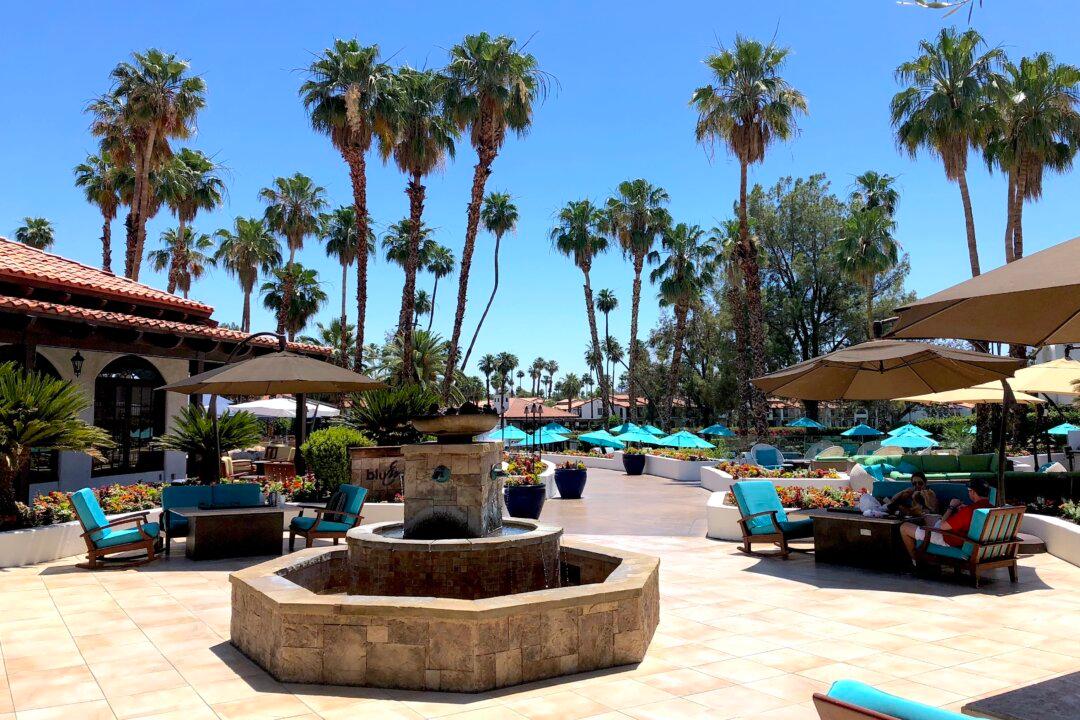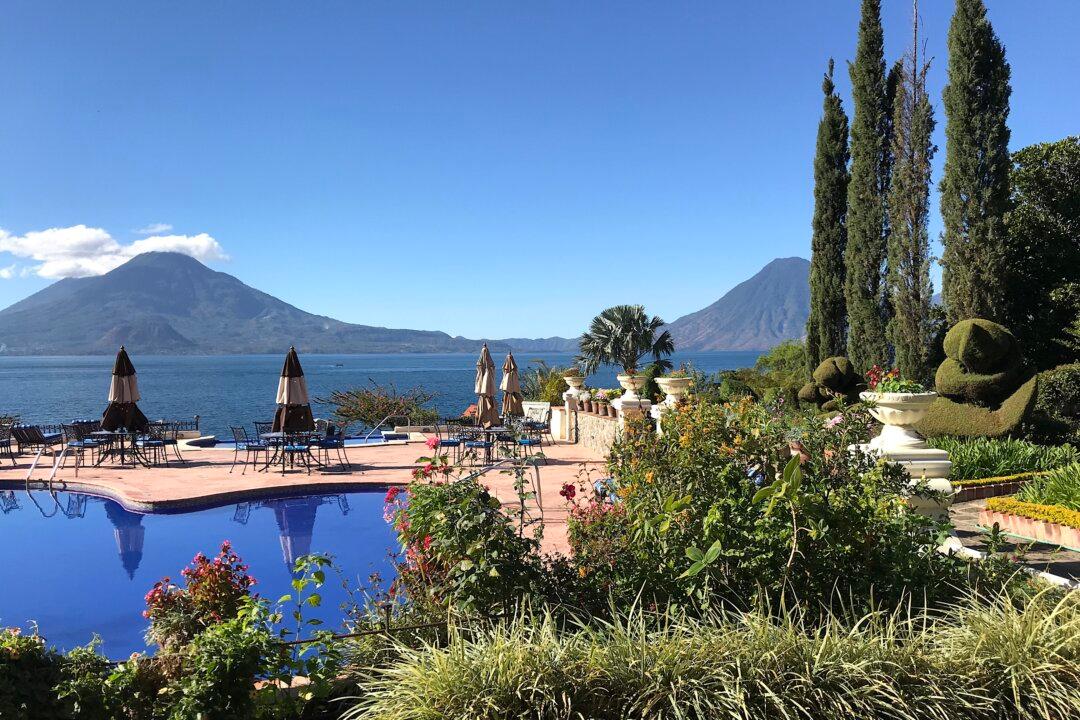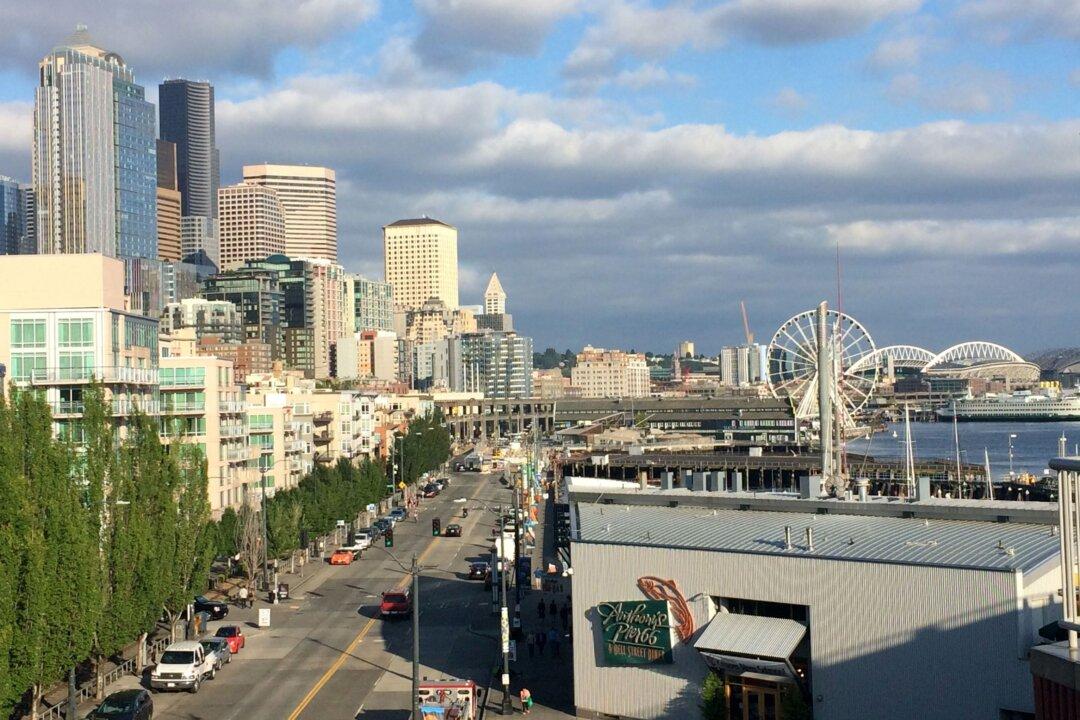He brushed along my waist as I gingerly stroked his back, fully knowing that he would quickly return for more. I tried to stay calm and very present, anticipating his next move.
I was wading in the warm, turquoise waters of the Caribbean with Duncan, a 145-pound giant turtle and his 250-pound girlfriend Tortuga, at Coral World Ocean Park in St. Thomas, U.S. Virgin Islands.
Also available at this marine setting was the opportunity to descend 15 feet beneath the mysterious waters in an air-conditioned Undersea Observatory, the only one of its kind in the Caribbean where one can stay totally dry and enjoy the non-captive life as they go about their daily activities.
Connecting with sea life and colorful corals was just one of the many memorable moments on my five-day getaway to unravel and detox from the pressures of city life to a slower-paced tropical lushness. Here, I unexpectedly discovered new tastes, sounds, and charismatic characters at St. Thomas’s city of Charlotte Amalie (named after a Danish princess) and the neighboring island of St. John, only a 20-minute ferry ride away from the smaller city of Red Hook. St. Croix is a 20-minute seaplane ride from St. Thomas, but unfortunately, there wasn’t enough time to explore this island in my short stay.
My amicable tour guide Campbell picked me up at the centrally located Windward Passage Hotel for a panoramic overview of both U.S. and British Virgin Isles in a two-hour scenic drive up 1,547 feet to the Mountain Top. We stopped on Valdemar Hill with a birds-eye view of Hassel Island and then to Drakes Seat, the bench where Sir Francis Drake watched the ships arrive in the bay, for a view of the aquamarine waters of Magens Bay Beach, noted as one of world’s most beautiful beaches.
While taking in the stunning scenery, Campbell briefed me on the island’s history as well as the other two U.S. Virgin Islands—St. John and St. Croix. After more than 150 years from Christopher Columbus’s voyage to these islands, Denmark planted its flag in 1670 on St. Thomas and later claimed the other two islands as part of the Danish West Indies. Sugar cane plantations were built on St. John and worked by imported African slaves. This horrid history was revealed to me later on during my day trip to the Annaberg Ruins, the plantations where the sugar cane industry once flourished.
When the Danes abolished slavery in 1848, the plantations dwindled. During WWI, the United States bought these islands on March 31, 1917 and renamed the Danish West Indies the American Virgin Islands. Though its residents are U. S. citizens, they can’t vote in U.S. elections. It’s only been since 1970 that islanders can vote for their own governor.
My tour of the 32-mile isle of St. Thomas continued along Main Street, flooded with a cornucopia of duty-free shops selling jewelry, artifacts, and souvenirs. The architecture along the narrow pathways was reminiscent of New Orleans with the wrought iron balconies and colorful facades. I particularly was enthralled with the narrow passageways between the buildings, which were covered by greenery and smaller artsy shops, giving the streets a European feel. The historic Hibiscus Alley is truly a photo op.
It was nearby where I encountered the delightful playwright/artist Tulip Fleming at Tropical Creations painting her finishing touches on a calabash shell to be used for a decorative planter. Winner of the 2008 Cultural and Craft Fair, Fleming is dedicated to her island roots reflected through her artifacts. Born in Antigua and long-time resident of St. Thomas, Tulip stated , “I work with indigenous materials to share the culture of the island, using gourds and coconut shells.”
She shared with me her framed, three-dimensional stilt figures called Mocko Jumba, a tradition from West Africa brought over by enslaved Africans. Due to their towering height, the live figures were supposed to foresee evil and warn villagers of forthcoming danger. Before I left, Fleming gave me a gift—a magnet with a photo of the local flower, the yellow cedar or Ginger Thomas. I thought this so coincidental because I had done my first painting of a tropical scene a few weeks before where I spontaneously integrated similar yellow flowers in the forefront before even knowing I was going on this amazing journey.
Down a neighboring alleyway in the historic district, along Raadets Gade (Street), I found the dynamic Shaka-Man-Zulu (aka Charles Matthew). Speak of local color. This owner of a fine handcrafted jewelry store was dressed in full-feathered regalia. Charles creates elaborate costumes, along with shields and spears, for the yearly Carnival. An entrepreneur by nature, he states, “I couldn’t find the costumes that I wanted, so I started to design my own along with the jewelry and weaponry.”
After a chat with Charles, I continued to explore the streets passing the 99 Steps built by the Danes to solve the dilemma of climbing the hillside. At the top of the steps, I was at the foot of more stairs leading to the historic watchtower in Blackbeard’s Castle, built in the 1600s to keep an eye on the enemy ships beyond. Close by sits Hotel 1829, once a townhouse for a French sea captain.
Two more not-to-be-missed sights in walking distance from this area are the St. Thomas Synagogue, the second oldest synagogue in the western hemisphere and the Camille Pissarro Gallery. The synagogue was originally built in 1796 by Sephardic Jews and still contains floors covered with sand—derived from the practice of Crypto-Jews during the Spanish Inquisition to muffle their prayers and footsteps to keep from being burnt at the stake or tortured.
Presented in a glass case is a photo of the town’s most famous Jewish resident, impressionist painter Camille Pissarro. The painter’s home is a landmark on Main Street, now the Camille Pissarro Gallery, featuring dozens of renowned artists’ works including some of Pissarro’s masterpieces.
You can’t go hungry in St. Thomas with the droves of local eateries. Note that the town closes, including many of the restaurants, by 5 p.m. on the dot. It was at Gladys’ Café, set in a 300-year-old stone building with beamed ceilings off of Palm Passageway, where I tasted my first Johnny cakes, similar to fritters or New Orleans beignets (without sugar).
Gladys herself is quite a character. Every morning, she is in her kitchen cooking up everything from curried goat, stewed oxtails to Kalaloo soup—a spinach gumbo with ochre. She also jars her world-famous-house-made hot sauces, which can also be ordered online. She may just belt out a song without warning. During my tasty lunch of Mahi Mahi with rice, pigeon peas, and plantains, she broke into “The Summer Wind” a cappella.
Just around the corner stands Amalia Café, for hearty Spanish paella and a scrumptious blueberry bread pudding (which melted in my mouth), with refreshing sangria to wash down the meal. Owner Randolph Maynard will soon open a French-style restaurant, The Gavel, on top of Main Street.
A fun place to dine and hear the calypso sounds, dancing, limbo, and a fulfilling buffet is at Bolongo Bay Beach Resort, an approximate 25-minute car ride snaking through the mountainside. I couldn’t help but get up and dance, when I heard those rhythmic steel drums. The resort offers all-inclusive stay packages with meals and activities.
I returned here again for my final night to experience the Sunset Harbor Cocktail Cruise. I was stretched out at the helm of the catamaran, sipping a cool drink, while meditating on the mountainside and soothing sounds of the waves. I now knew that my mission of relaxation and serenity had come to fruition.
For further information on U.S. Virgin Islands, contact www.visitusvi.com.
Beverly Mann has been a feature, arts, and travel writer in the San Francisco Bay Area for the past 28 years. She has received numerous accolades in the fields of travel writing, education, and international public relations, including a Bay Area Travel Writers Award of Excellence in Newspaper Travel Writing; www.beverlymann.com.





